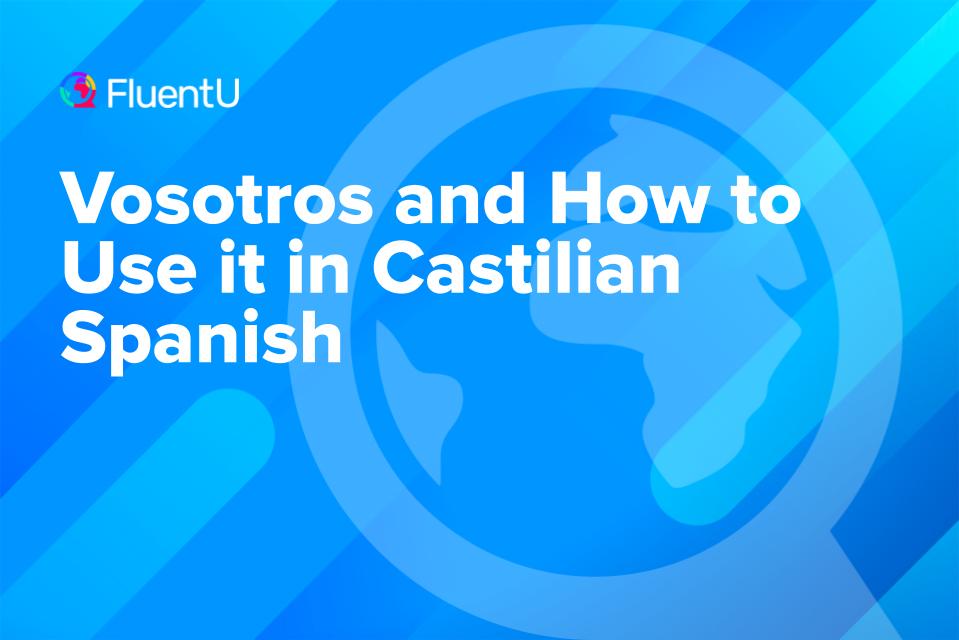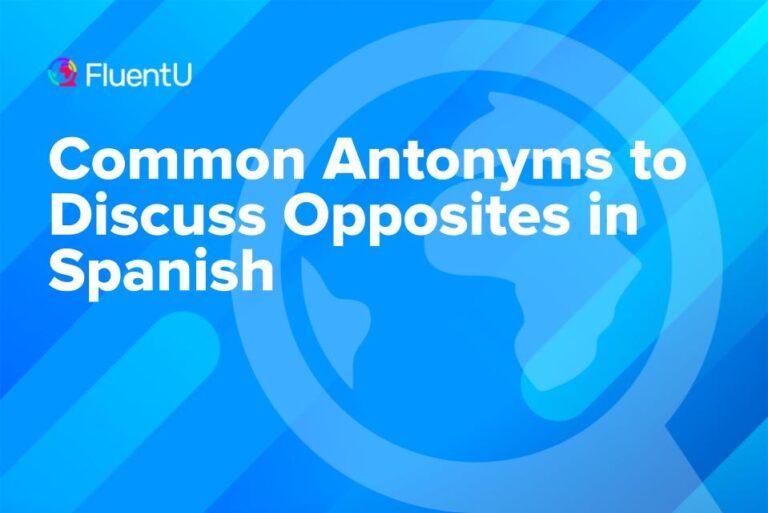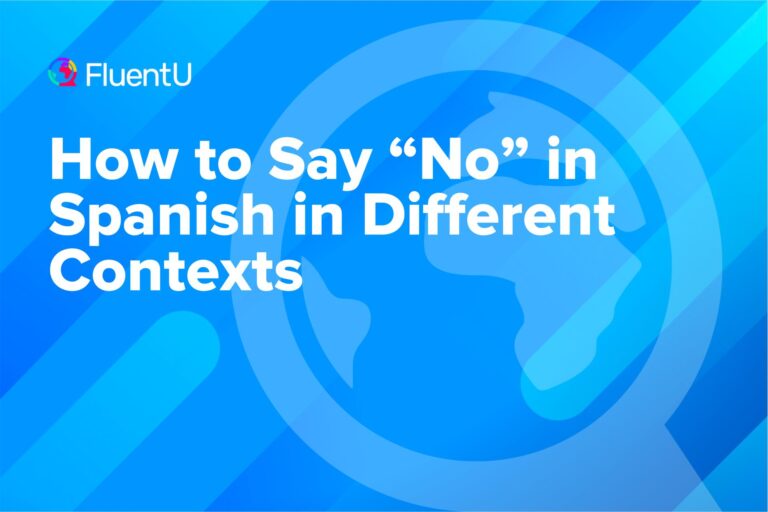Vosotros and How to Use it in Castilian Spanish

One of the main differences between Castilian Spanish and Latin American Spanish is the use of vosotros in Spain. It isn’t necessarily complicated to use: It’s merely unfamiliar to many Spanish speakers who learned Spanish from the Americas.
Vosotros is used in Castilian Spanish when a person is speaking directly to a group of people, like ustedes is used in Latin American Spanish.
Download: This blog post is available as a convenient and portable PDF that you can take anywhere. Click here to get a copy. (Download)
What is Vosotros?
Vosotros is the plural and informal way of saying “you” in Spain. Think of it as the Castilian Spanish equivalent of saying “you guys” or “y’all.”
If you’ve learned Latin American Spanish you may be unfamiliar with this term: In Latin American Spanish, regardless of your relationship with the people you are talking to, when speaking to a group of more than one person you use ustedes.
In Spain however ustedes is reserved exclusively for very formal situations and isn’t always appropriate to use.
Vosotros is the preferred way to address a group of more than one person. For example:
¿Vais a venir a la fiesta esta noche?
(Are you guys going to come to the party tonight?)
¡Sois muy amables!
(You guys are so kind!)
When to Use Vosotros
Vosotros is used in Castilian Spanish when a person is talking to a group of more than one person in most situations.
¿Cómo estáis?
(How are you all?)
¿Adónde vais?
(Where are you guys going?)
In Spain, ustedes is seen as a very formal way to address a group, so you would only use ustedes in situations where such a level of formality is needed, for example when meeting with work superiors or someone of high importance.
So unless the situation is very formal, always use vosotros when speaking to more than one person in Spain.
How to Use Vosotros
In Spanish, it isn’t necessary to use vosotros + the conjugation of vosotros in a sentence. It is perfectly acceptable to just use the conjugation, however you can use vosotros in a sentence if you want to emphasize what you are saying:
Vosotros sois mis mejores amigos.
(You are all my best friends.)
If you are using it to emphasize, vosotros must agree in gender. For example, if the group is all male or is made up of both males and females, use vosotros.
Vosotros trabajáis aquí en la oficina de lunes a jueves y ellos trabajan aquí los viernes. (You all work here in the office from Monday to Thursday and they work here on Fridays.)
If it’s a group of only women, use vosotras.
Vosotras sois mis mejores amigas.
(You are all my best friends.)
The Difference Between Vosotros and Ustedes
As we mentioned earlier, Latin American Spanish uses ustedes to mean “you all” in both formal and informal situations. There is no grammatical distinction—the formality would come from the rest of language used in the interaction.
In Spain, Spanish speakers have a clear distinction in formality by using vosotros for most situations. Ustedes is reserved for very formal occasions.
For example, in Spanish, these sentences both mean “Could you all send me an email with the signed document?” however the second version would be considered very formal in Spain.
Vosotros (informal): ¿Me podéis mandar un correo electrónico con el documento firmado?
Ustedes (formal): ¿Me pueden mandar un correo electrónico con el documento firmado?
The best way to learn the differences in use between ustedes and vosotros is by seeing it used by native Castilian Spanish speakers. There are plenty of Spanish YouTubers or Spanish TV series you could watch to delve into the use of vosotros in context. You could even try watching your favorite movie on Netflix and set the audio and subtitles to “European Spanish.”
Another useful resource is FluentU. This language learning program uses short Spanish videos to create an immersive learning experience.
FluentU takes authentic videos—like music videos, movie trailers, news and inspiring talks—and turns them into personalized language learning lessons.
You can try FluentU for free for 2 weeks. Check out the website or download the iOS app or Android app.
P.S. If you decide to sign up now, you can take advantage of our current sale!

The FluentU Spanish YouTube channel also has videos like this one that uses Spanish-dubbed episodes of famous TV shows, movies and cartoons to teach you Spanish:
By consuming native content, you’ll be able to pick up on how and when to use vosotros in different contexts—and be ready for your next conversation with Castilian Spanish speakers.
Vosotros Verb Conjugations
Every Spanish verb has one of three endings: –ar, -er or -ir, and vosotros has different conjugations based on a verb’s ending.
Indicative Tenses
The following chart provides the endings for the present simple, preterite, past imperfect, future, and conditional tenses.
To conjugate vosotros in the present, preterite and past imperfect, remove the infinitive verb ending (-ar, -er or -ir) and add the appropriate vosotros ending.
To conjugate vosotros in the future and conditional tenses, keep the infinitive ending (-ar, -er or -ir) and add the appropriate vosotros to it.
| Present | Preterite | Imperfect | Future | Conditional | |
|---|---|---|---|---|---|
| -ar | -áis | -asteis | -abais | -éis | -íais |
| -er | -éis | -isteis | -íais | -éis | -íais |
| -ir | -ís | -isteis | -íais | -éis | -íais |
Let’s have a look at example sentences in each of these tenses:
The present tense is used in Spanish to talk about an action that is happening now or is ongoing. It is also commonly used for facts or something fixed.
¿Venís a este bar cada miércoles?
(Do you guys come to this bar every Wednesday?)
Habláis español e inglés.
(You all speak Spanish and English.)
The preterite tense is used when talking about something in the past that has already happened. When a specific time frame for the action taking place is mentioned, the preterite tense is used.
Hablasteis mucho de la política española anoche.
(You guys talked a lot about Spanish politics last night.)
Ayer comisteis paella en la casa de Juan.
(Yesterday you guys ate paella at Juan’s house.)
The imperfect tense is used for ongoing actions in the past. These are often general statements with no particular time frame where we would use “used to” in English.
Jugabais al fútbol cada día.
(You guys used to play football every day.)
The future tense is used for actions that will happen in the future.
Comeréis hamburguesas mañana.
(You guys will eat hamburgers tomorrow.)
The conditional tense is often used in Spanish to describe hypothetical situations, express wishes, requests or to propose something. In English, the equivalent is “could” or “would.”
¿Caminaríais al parque conmigo?
(Would you guys walk to the park with me?)
Subjunctive Tenses
Present subjunctive and imperfect subjunctive vosotros conjugations:
| Present Subjunctive | Imperfect Subjunctive | |
|---|---|---|
| -ar | -éis | -ais |
| -er | -áis | -ais |
| -ir | -áis | -ais |
Present subjunctive
We use the subjunctive mood to talk about hypothetical or uncertain things, or to express emotions.
To conjugate vosotros in the present subjunctive mood, conjugate the verb in the present tense yo form and then remove the -o. Then, simply add the appropriate endings, which are -áis for -er and -ir verbs and -éis for -ar verbs.
Me gusta que cocinéis comida saludable.
(I like that you all cook healthy food.)
Vamos al cine cuando queráis.
(We’ll go to the movies whenever you guys want.)
Imperfect subjunctive
As we have mentioned above, the subjunctive is often used in Spanish when talking about hypothetical situations, expressing opinions or making requests. The imperfect subjunctive is mostly used when speaking about the past. For example, you may be talking about your feelings about a particular thing or a request, e.g., Me dijo que lo llamara más tarde (He told me to call him back later.)
For more uses of the imperfect subjunctive, check out this post.
To conjugate vosotros in the imperfect subjunctive, first conjugate the verb in the past tense ellos/ellas/ustedes form. Then remove the final -on and add the ending -ais for all three types of verbs.
La chica deseaba que desayunarais con ella.
(The girl wanted you guys to eat breakfast with her.)
Dudaba que llegarais temprano.
(I doubted that you would arrive on time.)
Commands
To make an affirmative vosotros command, simply take an infinitive verb and replace the final r with d.
¡Venid aquí ahora mismo!
(Come here right now!)
¡Pasadlo bien en la feria!
(Have a good time at the fair!)
To make a negative vosotros command, use the present subjunctive vosotros conjugation:
¡No comáis eso!
(Don’t eat that!)
¡No habléis con ellos!
(Don’t speak to them!)
Compound Tenses
Spanish has a number of compound tenses, which are phrasal verbs made up of a main verb and an auxiliary verb.
For vosotros, you only have to conjugate the auxiliary verb. The main verb is conjugated the same regardless of the form.
Present continuous
The present continuous tense is used to talk about actions that are occurring at the moment of speech.
To use it with vosotros, we use the auxiliary verb estar (to be) conjugated in the present tense vosotros conjugation (estáis) + a gerund, which either ends in –ando or –iendo.
Estáis hablando de cosas muy interesantes.
(You guys are talking about very interesting things.)
Past perfect
The past perfect is used to describe an action that began in the past and continues into the present.
It consists of the auxiliary verb haber (to be/to have) in the present tense vosotros conjugation (habéis) and a past participle, which generally end in –ado, -ido, -to, -so, or –cho.
¿Ya habéis cenado?
(Have you all eaten dinner already?)
Pluperfect
The pluperfect tense is used when you are referring to two subsequent actions, both of which happened in the past.
It’s formed with the verb haber (to be/to have) in the imperfect tense vosotros conjugation (habíais) + a past participle.
¿Habíais escuchado la música del grupo antes de ir al concierto?
(Had you guys heard the group’s music before going to the concert?)
A las 5 ya habíais salido de casa.
(At 5 you had already left home.)
Irregular Verbs in Vosotros
There are very few irregular vosotros verb conjugations.
One-syllable verbs like dar and ver will not need an accent mark in the present tense vosotros form (dais, veis). Aside from those exceptions, in the present tense you have two irregular verbs:
Ir (to go) — vais
Ser (to be) — sois
In the preterite tense, almost all irregular verbs take the same irregular stem as the other forms, with the –isteis ending. For example, the irregular verb estar (to be) becomes estuvisteis.
The imperfect tense only has three irregular verbs:
Ir (to go) — ibais
Ser (to be) — erais
Ver (to see) — veíais
In the future and conditional tenses, verbs in the vosotros conjugation take the same irregular stems as other forms. Tener becomes tendréis in the future tense and tendríais in the conditional tense.
The following five verbs are irregular in the present subjunctive:
Dar (to give) — deis
Haber (to have) — hayáis
Ir (to go) — vayáis
Saber (to know) — sepáis
Ser (to be) — seáis
Vosotros Object Pronouns
In Castilian Spanish, the object pronoun for vosotros when used as a direct object, indirect object or reflexive pronoun is os .
When using os as a direct object or indirect object pronoun, it can be placed both as a separate word before the verb or joined to the end of the verb.
Example sentence: “Can I call you all to talk about the party?”
¿Puedo llamaros para hablar sobre la fiesta?
¿Os puedo llamar para hablar sobre la fiesta?
Os is also used as the reflexive pronoun for vosotros and is placed in front of the conjugated verb form. For example:
Iba a presentaros, pero ya os conocéis, ¿verdad?
(I was going to introduce you to each other, but you already know each other, right?)
Note that the prepositional vosotros pronoun stays the same as the subject: vosotros/as.
Quiero ir a Sevilla con vosotros.
(I want to go to Seville with you guys.)
Learning and using vosotros is no different from learning any other conjugation. All it takes is some practice and repeated exposure.
Take the time to learn vosotros—your Spanish friends and acquaintances will thank you for it!
Download: This blog post is available as a convenient and portable PDF that you can take anywhere. Click here to get a copy. (Download)
And One More Thing…
If you've made it this far that means you probably enjoy learning Spanish with engaging material and will then love FluentU.
Other sites use scripted content. FluentU uses a natural approach that helps you ease into the Spanish language and culture over time. You’ll learn Spanish as it’s actually spoken by real people.
FluentU has a wide variety of videos, as you can see here:

FluentU brings native videos within reach with interactive transcripts. You can tap on any word to look it up instantly. Every definition has examples that have been written to help you understand how the word is used. If you see an interesting word you don’t know, you can add it to a vocab list.

Review a complete interactive transcript under the Dialogue tab, and find words and phrases listed under Vocab.

Learn all the vocabulary in any video with FluentU’s robust learning engine. Swipe left or right to see more examples of the word you’re on.

The best part is that FluentU keeps track of the vocabulary that you’re learning, and gives you extra practice with difficult words. It'll even remind you when it’s time to review what you’ve learned. Every learner has a truly personalized experience, even if they’re learning with the same video.
Start using the FluentU website on your computer or tablet or, better yet, download the FluentU app from the iTunes or Google Play store. Click here to take advantage of our current sale! (Expires at the end of this month.)







